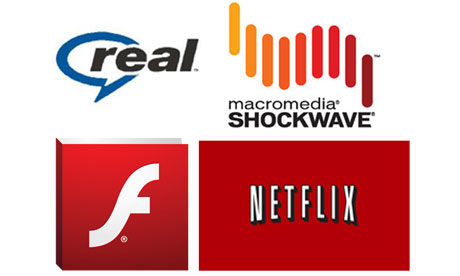A history of media streaming and the future of connected TV — from guardian.co.uk by Alex Zambelli
We’re close to broadly available HD streaming which could trigger mass adoption of connected TV.
.

A precursor to…
![The Living [Class] Room -- by Daniel Christian -- July 2012 -- a second device used in conjunction with a Smart/Connected TV](http://danielschristian.com/learning-ecosystems/wp-content/uploads/2012/07/The-Living-Class-Room-Daniel-S-Christian-July-2012.jpg)
A history of media streaming and the future of connected TV — from guardian.co.uk by Alex Zambelli
We’re close to broadly available HD streaming which could trigger mass adoption of connected TV.
.

A precursor to…
![The Living [Class] Room -- by Daniel Christian -- July 2012 -- a second device used in conjunction with a Smart/Connected TV](http://danielschristian.com/learning-ecosystems/wp-content/uploads/2012/07/The-Living-Class-Room-Daniel-S-Christian-July-2012.jpg)
YouTube another MOOP (Massive Open Online Pedagogy) Learning will not be televised, it will be digitised. — from Donald Clark
and/or
More pedagogic change in 10 years than last 1000 years: Donald Clark at TEDxGlasgow
Some notes I took:
Lecture capture:
Khan Academy:
Sebastian Thrun
Social media
FrogOS video walkthrough – The future of learning technology — from frogtrade
Excerpt:
Well here it is, two years in the making, 1000’s of man hours and finally we can proudly show you the new software we have been showcasing at Bett 2013.
What better way to whet your appetites than to give you a simple video walkthrough that shows you just how easy it is to create a site in FrogOS.
.
.
.
From DSC — with a special thanks to Mr. Michael Haan, Technology Integration Specialist at Calvin College, for this resource
Now we’re talking! The Mondopad from InFocus is starting to morph into what I thought the “chalkboard of the future” might look like. Now I’d like to see:
Key features:
Also see the information out at Precision Data Products:
Games for a Digital Age: K-12 Market Map and Investment Analysis — from joanganzcooneycenter.org by John Richards, Leslie Stebbins and Kurt Moellering
January 28, 2013
A seat at the table at last — from campustechnology.com by Andrew Barbour
One result of the Year of the MOOC is that IT is finally getting a say in the strategic direction of the institution.
Excerpt:
It’s interesting that it took an external force to propel IT into this inner circle. I can’t recall how many stories CT has run proposing strategies for how CIOs could win a place at the table. At the end of the day, though, changing an institution as hidebound as the average college is not easily tackled from within. In contrast, there’s nothing like a little existential angst to shake things up.
But MOOCs aren’t the only drivers of this change. We often think of BYOD as stripping IT of control but–on the broader stage–it may be playing its own part in elevating IT’s profile on campus. For years, faculty resisted IT recommendations on how technology could improve teaching and learning. Saying no was easy–preserving the status quo always is. That’s changing now. BYOD is a force that faculty can’t resist. It is, after all, their customers bringing the devices to school. Suddenly, faculty are faced with demands for new styles of teaching that accommodate student preferences for technology and much more. Enter IT and a host of others who see the potential of tech in education.
Also relevant/see:
From DSC:
I wonder…are we migrating more towards brands and products/services provided by individuals or smaller teams of people? Consider Ian Byrd’s recent announcement re: Byrdseed.TV.
Mayer & Clark – 10 brilliant design rules for e-learning — from Donald Clark
Excerpt:
Richard Mayer and Ruth Clark are among the foremost researchers in the empirical testing of media and media mix hypotheses in online learning. Their e-Learning and the Science of Instruction (2003) covers seven design principles; multimedia, contiguity, modality, redundancy, coherence, personalisation, and practice opportunities. Clear explanations are given about the risks of ignoring these principles – with support from worked examples and case study challenges. It should be a compulsory text for online learning designers.
McGraw-Hill & Kno offer a peek into the future of textbooks: They’re dynamic, vocal, adaptive & bring stats to studying — from techcrunch.com by Rip Empson
Excerpt:
The suite leverages adaptive learning technology — one of the hottest topics in education this past year — which, simply put, seeks to personalize the educational experience by collecting data on student comprehension (knowledge, skill and confidence), employing algorithms to create customized study plans/paths based on that data. The goal being to keep students engaged (and improving) by helping them to identify and focus on areas where they’re struggling.
Prediction from DSC:
I’d like to take these developments one step further…
These developments will find their way into our living rooms, via second screen devices and interactions with Smart/Connected TVs. Highly-sophisticated, back-end, behind the scenes technologies will continue to develop (think Next Gen Knewton or IBM’s Watson) — aiding in the fulfillment of one’s learning objectives. Personalized, digital playlists will be presented and will feature multimedia-based content, with chances for more choice, more control, interactivity, social learning, and more. They will meet us where we are at (i.e. in our Zone of Proximal Development), and encourage us to keep learning via game-like interfaces…but will try not to overwhelm or discourage us. But live persons will either be instantly available to assist, and/or will help us walk through the steps, and/or perhaps we’ll go through these types of exercises in virtual cohorts (that come together quickly, then once finished with the badge or exercise, will disband).